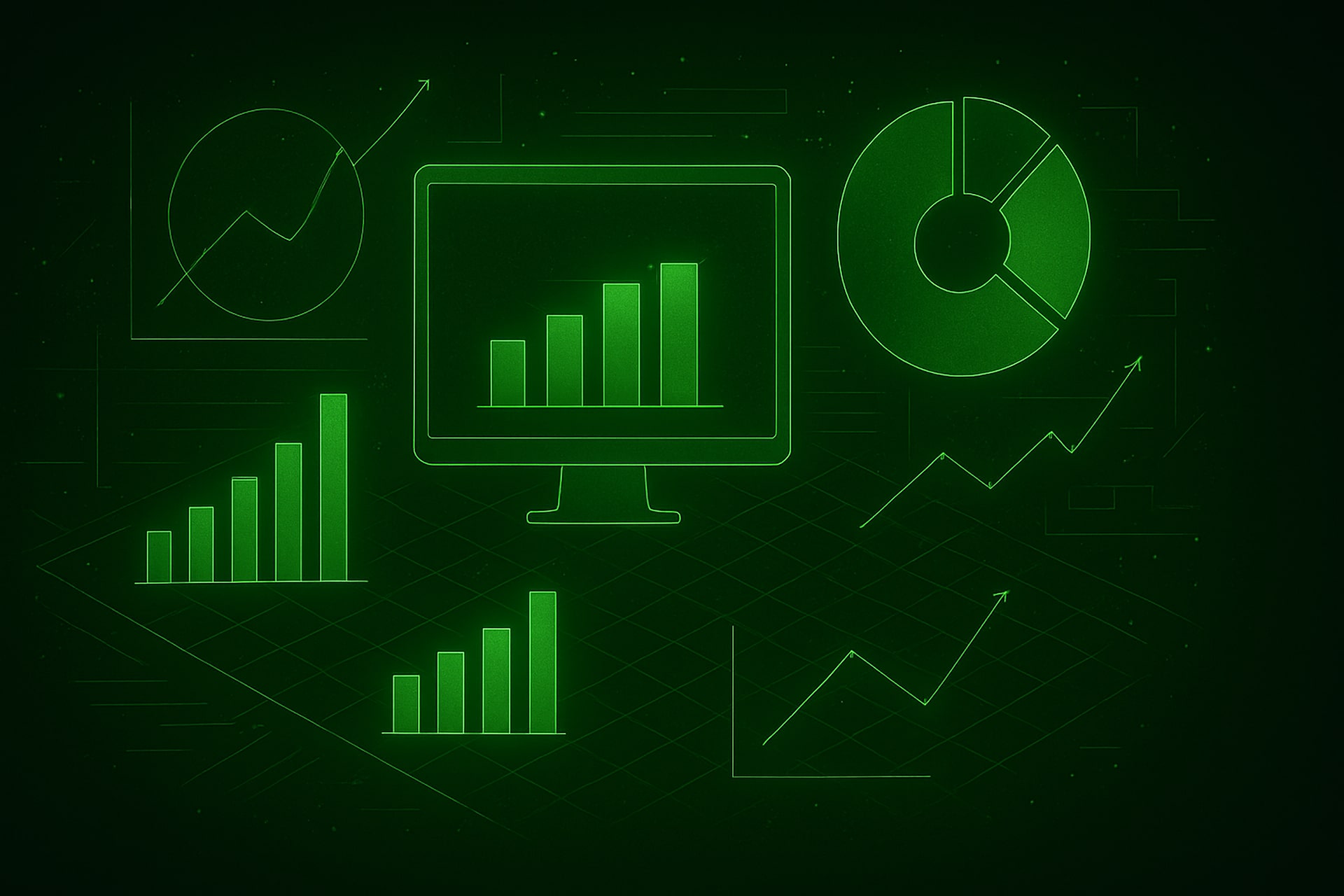
Imagine you’re trying to explain to a friend how much pizza you ate last month. You could say “A lot!” But that doesn’t really paint a clear picture, does it? Data visualization is like using a magic paintbrush to turn those boring numbers into beautiful, clear, and easy-to-understand images.
Data visualization is the art of representing data in a visual format. We use charts, graphs, maps, and other visual elements to tell stories with our data and help people understand complex information quickly and easily.
Data visualization is like having a superpower! It helps us:
Imagine you’re looking at a spreadsheet with hundreds of numbers. It’s pretty overwhelming! But if you use a bar chart to visualize those numbers, you might see a trend – maybe sales are going up each month, or maybe there’s a dip in sales around certain holidays.
Sometimes, numbers just don’t do the trick. A picture is worth a thousand words! A well-designed visualization can quickly convey complex data to your audience. Imagine you’re explaining to a group of people how air pollution changes over time. A line chart showing the data would be much easier to understand than a list of numbers.
When you can see your data in a clear and meaningful way, it’s easier to identify areas for improvement or make informed decisions. For example, if you’re looking at a map of traffic congestion in your city, you can see where bottlenecks occur and plan better routes to avoid them.
Just like there are different types of pizza, there are different types of data visualizations! Each type has its own strengths and weaknesses, and the best type for you depends on what you want to show.
Data visualization is like having a superpower! It helps us:
Great for comparing values across categories. Think about comparing the number of students in different schools, or the number of sales in different regions.
Perfect for showing trends over time. Imagine tracking your weight loss journey over several months, or the change in air temperature throughout the year.
Useful for showing parts of a whole. Think about visualizing the different components of your monthly budget, or the breakdown of a population by age group.
Allow you to see the relationship between two variables. For example, you could see if there’s a correlation between the number of hours a student studies and their exam score.
Powerful for visualizing spatial data. You could use a map to show the distribution of crime rates across a city, or the location of different businesses in a neighborhood.
These are just a few examples! There are many other types of visualizations available, each with its unique strengths and applications.
Just like choosing the right pizza topping, choosing the right visualization is important for effectively communicating your data. Consider these factors:
re you working with categorical data (like names or categories) or numerical data (like numbers)?
Do you want to show relationships, trends, or comparisons?
Who are you presenting your data to? Do they have a technical background, or are they beginners?
Let’s say you work at a pizza shop, and you want to understand how your sales are performing. You have data on the number of pizzas sold each day for the past month. How can you visualize this data?
You could use a:
To show the trend in pizza sales over time. You can quickly see if sales are increasing, decreasing, or staying relatively steady.
To compare pizza sales for different days of the week. You might notice that Fridays and Saturdays have the highest sales, while Mondays are typically slower.
To show the proportion of sales for different pizza toppings. You could see which toppings are the most popular, and which might not be selling as well.
Ready to unleash your inner data artist? There are plenty of resources and tools available to help you get started with data visualization. Some popular options include:
If you’re familiar with spreadsheets, Excel has built-in charting tools that can help you create basic visualizations.
Similar to Excel, but it’s free and cloud-based, which makes it easier to collaborate with others.
A powerful data visualization tool that allows you to create interactive and visually appealing dashboards.
Another powerful tool for data visualization, especially for business applications.
For those who are comfortable with coding, Python libraries like Matplotlib and Seaborn provide extensive customization options for creating high-quality visualizations.
Here are some helpful tips to create impactful and insightful visualizations:
Don’t overload your visualizations with too much information. Focus on conveying your main message clearly and concisely.
Make sure your axes, legends, and other labels are easy to read and understand.
Use colors that are visually appealing and that help to differentiate different parts of your data. Avoid using too many colors, as it can be overwhelming.
Your visualization should not just be a collection of data points; it should tell a compelling story about your data.
Share your visualizations with others and ask for feedback. This can help you identify areas for improvement and ensure that your message is being communicated effectively
Data visualization is a powerful tool that can help you understand and communicate data in a meaningful way. By mastering the basics of data visualization, you can unlock a whole new world of insights and make data-driven decisions with confidence. So, grab your paintbrush (or your coding skills!) and start visualizing!